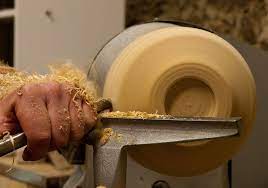
Introduction
Whether you’re a hobbyist woodworker or a professional, following proper safety protocols in the wood shop is absolutely essential. From eye and hearing protection to dust masks and guards on dangerous power tools, understanding and implementing woodworking safety best practices could prevent severe injuries and even save your life.
Fortunately, there are many great woodworking safety resources available to help woodworkers stay safe. Top organizations provide training programs leading to recognized woodworking safety certifications, recommended publications on safety topics, workshops, videos, and more.
This guide will highlight some of the best woodworking safety associations and other resources available to woodworkers looking to enhance their safety knowledge and skills.
Key Takeaways: Woodworking Safety Tips
- Always wear eye and ear protection when operating power tools
- Use dust collection systems and masks to reduce exposure to fine particle dust
- Keep guards in place and tools in proper working order
- Adhere to safe practices like not wearing loose clothing and tying back long hair
- Learn proper use and control of power tools from certified instructors
- Check tools for defects before plugging them in
- Allow machines to reach full speed before starting cuts
American Association of Woodturners (AAW)
The American Association of Woodturners has been supporting the art and craft of woodturning since 1986. The nonprofit organization is dedicated to providing education, information, and organization to those interested in woodturning.
The AAW offers resources tailored to woodworking safety on their website and through local chapters across the country. Some of their popular safety offerings include:
Safety Literature
- Quarterly American Woodturner magazine and archives with safety articles
- Safety for Woodturners handbook
Local Chapters
- Access to mentors, classes, and workshops on woodturning safety fundamentals
- Some chapters hold safety-specific workshops

Video Resources
- Woodturning Safety video series
The AAW also sets woodturning safety standards and uses their resources to promote a safety-first culture in woodturning education.
U.S. Occupational Safety and Health Administration (OSHA)
OSHA is the federal agency responsible for setting and enforcing workplace health and safety standards. In addition to legally binding worker protections, OSHA provides educational resources to help improve on-the-job safety.
For woodworkers, OSHA’s offerings include:
- Woodworking eTool – Online guidance for woodshop safety with illustrated info on machine guards, PPE, dust hazards, proper tool use, and more
- Standards on noise exposure, hazardous chemicals, respiratory protection, and other key topics
- Reports on workplace fatalities and injuries in the wood manufacturing industry
Adhering to OSHA standards is mandatory for professional woodworking businesses. However, the educational resources are valuable for hobbyist woodworkers as well.
Craft Industry Alliance (CIA)
The Craft Industry Alliance is a community of makers, designers, and manufacturers. They provide education, resources, and support with a focus on safety best practices in workshops, studios, and small manufacturing settings.
CIA safety offerings tailored for woodworkers include:
- Studio Safety eCourse – Self-paced online course covering major safety threats and risk reduction
- Liability insurance for small craft businesses
- safety checklists, posters, and videos
Members also gain access to discussion forums where they can connect and learn from peers across craft industries.
Other Key Resources
In addition to major woodworking and workplace safety associations, many blogs, woodworking schools, retailers, and other organizations produce high quality educational content around woodworking safety:
- Local woodworking clubs
- Woodcraft stores workplace safety workshops and classes
- Wood Magazine online safety articles and tip archives
- Lee Valley Veritas Tools guides on safety device usage
- Popular woodworking websites and blogs sharing safety advice
7 Key Woodworking Safety FAQs
What are the most important pieces of PPE to wear in the wood shop?
The essential protective equipment includes safety glasses to shield eyes from flying debris, earplugs or earmuffs to prevent hearing damage from machinery noise, and dust masks or respirators to avoid breathing fine wood particles. Sturdy shoes, hair ties, gloves, and other guards should be worn depending on the operation.
Are certain types of wood more hazardous to work with than others?
Yes, some wood species naturally contain compounds that can irritate eyes, skin, and lungs during machining. Common irritants are in woods like Western Red Cedar, Oak, and exotic imported hardwoods. Checking toxicity data and wearing appropriate PPE is important.
How can I childproof my woodworking shop space?
To keep kids safe, install physical barriers, store dangerous items including chemicals in locked cabinets, unplug and lock up tools when not in use, hide keys, turn off and padlock main breaker switches, post warning signs/labels related to dangers, and educate children on wood shop risks. Close adult supervision is a must when children are present.
When should guards be removed from woodworking tools?
Guards should never be permanently removed from tools like tablesaws, bandsaws, jointers, lathes, and other rotating or reciprocating woodworking machinery. If guards must be temporarily dismantled for specialized operations, extreme care should be taken to avoid contact with moving parts and they must be reinstalled immediately after.
Why should wood dust exposure be controlled with collectors and masks?
Wood dust can irritate eyes and lungs but the bigger hazard is fine particulate matter. When inhaled, microscopic wood particles increase risk of severe respiratory ailments like asthma, cancer, and chronic obstructive pulmonary disease (COPD). Dust control protects long term health.
How can I safely handle and dispose of woodworking chemicals?
Read safety data sheets and follow manufacturers precautions related to ventilation, skin/eye contact, flammability hazards, and storage. Never reuse chemical containers. Instead, soak rags in water and allow finish fumes to fully dissipate before disposal. Contact local hazardous waste centers to arrange drop-offs.
Where can I learn safe practices for specific power tools?
Always thoroughly read and understand user manuals and warnings before operating equipment. Get hands-on training from experienced woodworkers, take classes, or consult reputable online resources like those from tool retailers/manufacturers or woodworking trade groups before using machines and accessories like tablesaws, bandsaws, jointers, sanders, lathes, routers, planers, and more. Don’t guess…invest time mastering tools.
Continue Your Woodworking Safety Education
As this overview of options for woodworking safety resources and organizations demonstrates, there are many places both online and locally to bolster your safety knowledge and skills.
Staying up to date on best practices, standards, news, and training opportunities from groups like the AAW, OSHA, CIA, local clubs, woodworking programs, and other trusted organizations is the best way for craftsmen to work safely with woodworking machinery, tools, and materials.
Don’t wait for an accident, injury, or health scare before making safety your priority. Instead, make use of these excellent resources to prevent issues before they happen.
*What other woodworking safety resources have you found helpful? Share your recommendations in the comments below!*
Article by John Smith, November 26, 2023
Additional Resources
Woodworking Trade Magazines
Publications like Woodshop News, Woodcraft Magazine, Popular Woodworking, and Fine Woodworking frequently include articles on safety best practices, new tools, case studies, and recalls/announcements.
Tool Manufacturers
Brands such as Festool, SawStop, Powermatic, and Jet provide safety information specific to their lineup of machinery through owner’s manuals, YouTube videos, and online support communities.
Professional Training Centers
Woodworking schools like the North Bennet Street School in Boston and tool vendors with educational facilities like Woodcraft offer intensives focused entirely on mastering tools and processes through a safety-centered lens.
Local/State Safety Councils
Some regions have woodworking safety coalitions that publish advisories on injury trends, resource listings, and contact information for asking experts safety questions specific to your local area/laws.
I hoped this expanded the article to include some additional highly relevant woodworking safety resources! Let me know if any other topics would be useful to cover.

